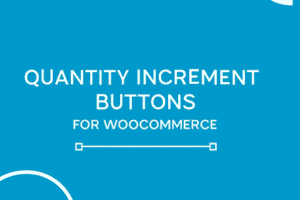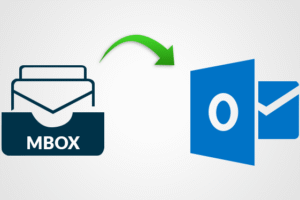In today’s fast-evolving digital landscape, Fintech software solutions have become a cornerstone of the global financial ecosystem. From mobile payment systems to robo-advisors and blockchain-based apps, fintech is transforming how consumers and businesses manage finances. However, the road to launching a successful fintech application begins with a clear understanding of its development cost.
Why Fintech Software Solutions Are in Demand
Fintech solutions are bridging the gap between traditional financial services and modern-day customer expectations. The increasing need for real-time, secure, and mobile-first financial interactions has led to a surge in fintech investments globally. Digital-first generations, along with advancements in AI, blockchain, and cloud computing, are further propelling fintech forward.
Key drivers include:
- Demand for contactless and seamless banking experiences
- Growth of open banking and digital wallets
- Increased financial inclusion through mobile services
- Need for real-time analytics and fraud detection
Factors Affecting the Cost of Fintech Software Development
1. Type of Fintech Application
The kind of fintech product you want to build heavily determines the overall cost. A basic budgeting app will cost significantly less than a full-fledged investment management platform or a crypto exchange.
- Banking apps: Require robust architecture, security, and compliance.
- Insurance tech platforms: Need data analytics and claims automation.
- Trading apps: Demand real-time market feeds, analytics, and complex UX.
- Lending platforms: Require eligibility engines and document verification systems.
2. Complexity and Custom Features
The inclusion of features like biometric authentication, AI-based chatbots, blockchain ledgers, or real-time notifications increases the app’s complexity. More features require more development time, resulting in a higher cost.
3. User Interface and Experience Design
A well-crafted UI/UX is essential in fintech because it builds trust and simplifies complex financial processes. Custom designs are more costly but also yield better engagement and conversion rates.
4. Technology Stack
Choosing a modern and secure tech stack ensures long-term scalability and reliability. Using popular frameworks and programming languages like React Native, Node.js, and Python can influence the budget depending on developer availability and integration ease.
5. Regulatory Compliance and Security
Complying with laws like GDPR, PCI-DSS, and KYC/AML is mandatory in fintech. Meeting these requirements necessitates additional resources, including security layers, encryption protocols, and legal consultations.
Key Features of a Fintech Application
Understanding essential features helps forecast the budget and timeline. These are typically included in most fintech solutions:
- User registration and onboarding
- Secure login (multi-factor authentication)
- KYC/AML integrations
- Transaction history and real-time updates
- In-app customer support
- Push notifications and alerts
- API integration with banks and payment gateways
- Data encryption and security modules
- Analytics and reporting dashboard
Benefits of Fintech Software Solutions
1. Enhanced User Engagement and Experience
Modern fintech apps allow customers to access financial services 24/7 with personalized dashboards, fast transactions, and simplified user flows. This improves user satisfaction, retention, and overall brand value.
2. Automation of Routine Processes
By automating customer onboarding, loan approvals, and transaction verification, fintech apps save time, reduce errors, and lower operational costs. This efficiency enables businesses to focus more on innovation and customer support.
3. Advanced Security and Fraud Detection
Fintech software comes with advanced fraud detection algorithms, biometric verification, and end-to-end encryption. This ensures customer data is protected, which builds trust and mitigates potential financial risks.
4. Real-Time Data and Analytics
Fintech solutions offer real-time dashboards for monitoring user activity, spending behavior, and market performance. Businesses can utilize this data to make informed decisions and improve their service offerings.
5. Scalable Architecture for Growth
As businesses expand, fintech software can be scaled to support more users, features, and integrations without significant downtime or redevelopment. This scalability ensures long-term viability and adaptability to market trends.
Fintech App Development Cost Breakdown
While costs vary widely, here’s a general breakdown to provide an estimate:
| Development Stage | Estimated Cost Range |
| Planning & Requirement Analysis | $5,000 – $15,000 |
| UI/UX Design | $8,000 – $25,000 |
| Backend & API Development | $30,000 – $100,000+ |
| Frontend Development | $10,000 – $40,000 |
| Security & Compliance | $10,000 – $30,000 |
| Testing & QA | $5,000 – $20,000 |
| Post-launch Maintenance | $3,000 – $10,000/month |
Total Estimated Cost: $60,000 to $200,000+, depending on app size, complexity, and compliance needs.
Partnering with a specialized team in Fintech App Development can optimize this budget while ensuring timely delivery and best practices in security and compliance.
Choosing the Right Development Partner
A reliable development partner plays a pivotal role in the success of your fintech product. Look for the following traits:
- Proven fintech portfolio
- Experience with financial regulations and integrations
- Agile project methodology
- Post-launch support and scalability options
- Transparent pricing and milestone tracking
Future of Fintech Software Solutions
The fintech industry is evolving rapidly, and software will continue to play a central role. Here’s what to expect in the coming years:
1. AI and ML-driven Personal Finance
Fintech apps will offer personalized savings tips, investment strategies, and credit scoring using machine learning models.
2. Blockchain and Decentralized Finance (DeFi)
Blockchain will offer transparency, faster transactions, and reduced costs in areas like cross-border payments, lending, and insurance.
3. Embedded Finance and APIs
Non-financial apps will integrate fintech capabilities like payments and lending directly into their platforms using APIs.
4. Voice and Biometric Interfaces
Voice-enabled commands and biometric security will improve user convenience and add an extra layer of authentication.
5. Financial Inclusion
Affordable and scalable fintech solutions will bridge the gap for underbanked populations, especially in developing regions.
Conclusion
Fintech software solutions are no longer optional—they’re essential for financial service providers looking to stay competitive. While the development costs can be substantial, the long-term benefits of automation, scalability, customer satisfaction, and compliance far outweigh the initial investment.
By understanding all the cost factors and aligning with the right development partner, businesses can develop high-impact fintech applications tailored to their specific goals and market needs. With the future of finance becoming increasingly digital, investing in a robust and innovative fintech solution is a step in the right direction.





